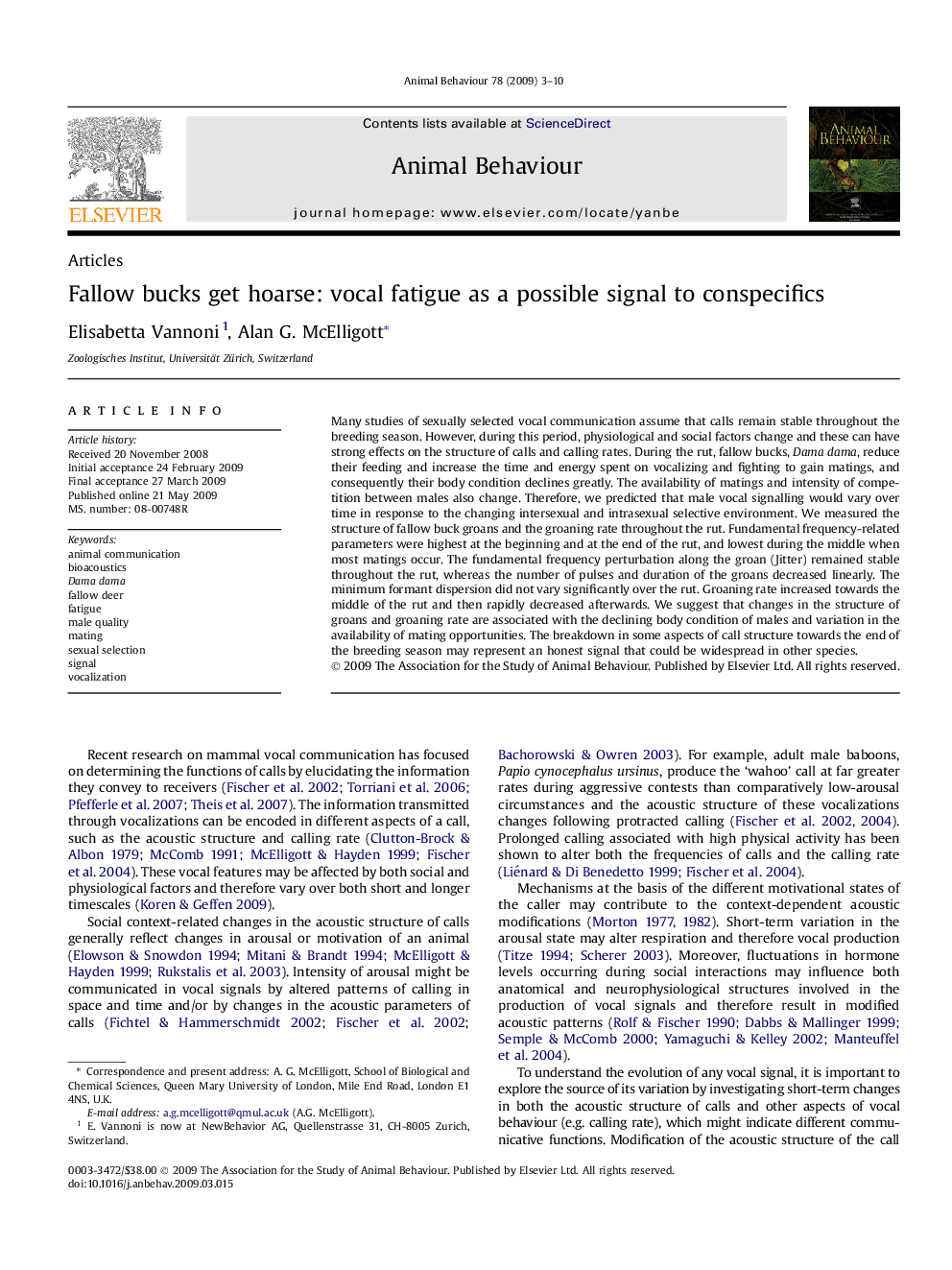| کد مقاله | کد نشریه | سال انتشار | مقاله انگلیسی | نسخه تمام متن |
|---|---|---|---|---|
| 2417576 | 1104323 | 2009 | 8 صفحه PDF | دانلود رایگان |

Many studies of sexually selected vocal communication assume that calls remain stable throughout the breeding season. However, during this period, physiological and social factors change and these can have strong effects on the structure of calls and calling rates. During the rut, fallow bucks, Dama dama, reduce their feeding and increase the time and energy spent on vocalizing and fighting to gain matings, and consequently their body condition declines greatly. The availability of matings and intensity of competition between males also change. Therefore, we predicted that male vocal signalling would vary over time in response to the changing intersexual and intrasexual selective environment. We measured the structure of fallow buck groans and the groaning rate throughout the rut. Fundamental frequency-related parameters were highest at the beginning and at the end of the rut, and lowest during the middle when most matings occur. The fundamental frequency perturbation along the groan (Jitter) remained stable throughout the rut, whereas the number of pulses and duration of the groans decreased linearly. The minimum formant dispersion did not vary significantly over the rut. Groaning rate increased towards the middle of the rut and then rapidly decreased afterwards. We suggest that changes in the structure of groans and groaning rate are associated with the declining body condition of males and variation in the availability of mating opportunities. The breakdown in some aspects of call structure towards the end of the breeding season may represent an honest signal that could be widespread in other species.
Journal: Animal Behaviour - Volume 78, Issue 1, July 2009, Pages 3–10